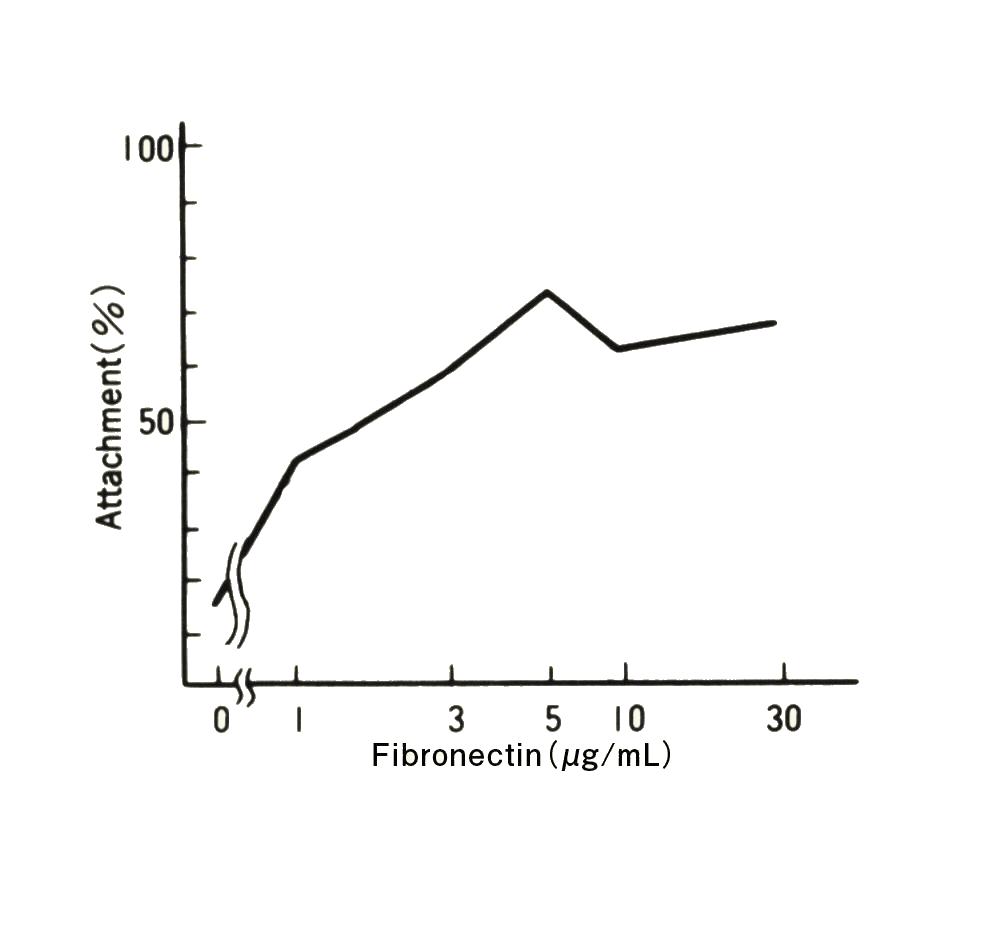Fibronectin Solution, from Human Plasma
Fibronectin is an extracellular matrix glycoprotein. It exists as a dimer consisting of two nearly identical ~250-kDa subunits. Fibronectin plays a major role in the adhesion of various types of cells, including fibroblasts, hepatocytes, and neurons. In addition to cell adhesion, this glycoprotein mediates many other cellular processes (such as cell migration and phagocytosis) through the interaction with a family of specialized cell-surface receptors called integrins. It is also well established that fibronectin has profound effects on wound healing.
Overview
- Concentration: 0.5 mg/mL (the value obtained with the first lot)
- Formulation: 20 mM Tris-HCl (pH 7.0), 450 mM NaCl, and 12% glycerol
- Sterility: Filtered through a 0.2 μm pore size membrane
- Storage Conditions: Store at –80°C. (Stable at –20ºC for up to one year from date of receipt.)
Instructions for Use
- Slowly thaw the fibronectin stock solution at 4°C or on ice.
- Dilute to an appropriate concentration (5-30 µg/mL) using D-PBS (calcium- and magnesium-free) or medium.
- Coat cell culture substrates with the appropriate volume of diluted fibronectin solution.
- Incubate for 2 hours at 37℃ or overnight at 4℃.
- Carefully remove the fibronectin solutionform culture vessel.
- Wash the culture substrates 2-3 times with D-PBS (calcium- and magnesium-free) or a similar buffer.
- Plate cells at desire density.

■Product Validation
The FUJIFILM Wako fibronectin stock solution was diluted with D-PBS (calcium- and magnesium-free) to the concentrations indicated in the figure. These solutions were placed in 24-well plates (0.3 mL/well) and incubated overnight at 37℃. Following incubation, the fibronectin solutions were removed by aspiration and the wells were blocked with BSA. TIG-3 cells were then plated at a density of 5×104 cells/well and were allowed to attach to the wells for 90 min at 37°C. Subsequently, unattached cells were removed by washing. The remaining adherent cells were harvested by treatment with trypsin-EDTA and used for cell number quantification.
Frequently Used Cell Types
- Fibroblasts
- Liver cells
- Nerve cells
Product List
- Open All
- Close All
For research use or further manufacturing use only. Not for use in diagnostic procedures.
Product content may differ from the actual image due to minor specification changes etc.
If the revision of product standards and packaging standards has been made, there is a case where the actual product specifications and images are different.



